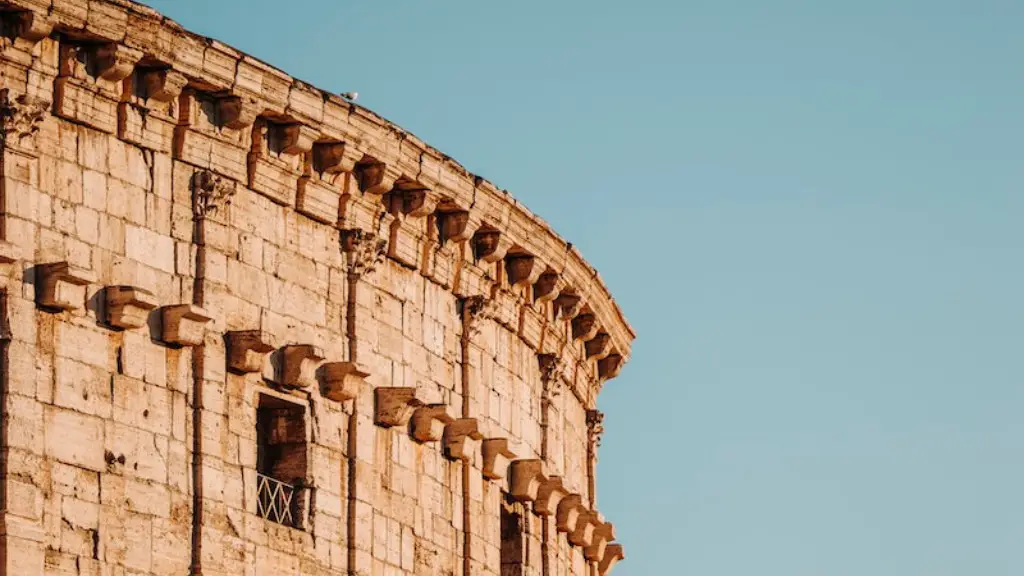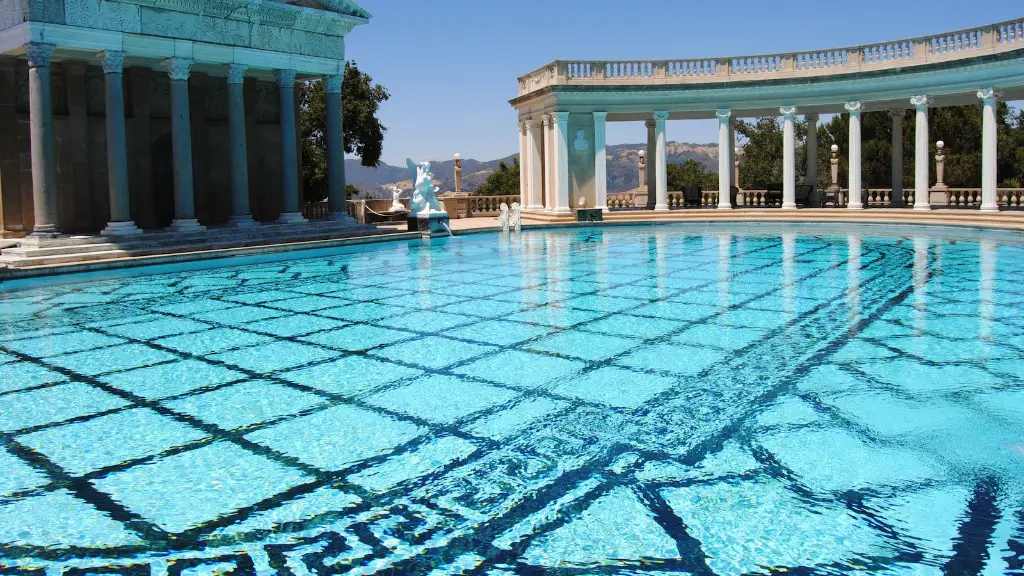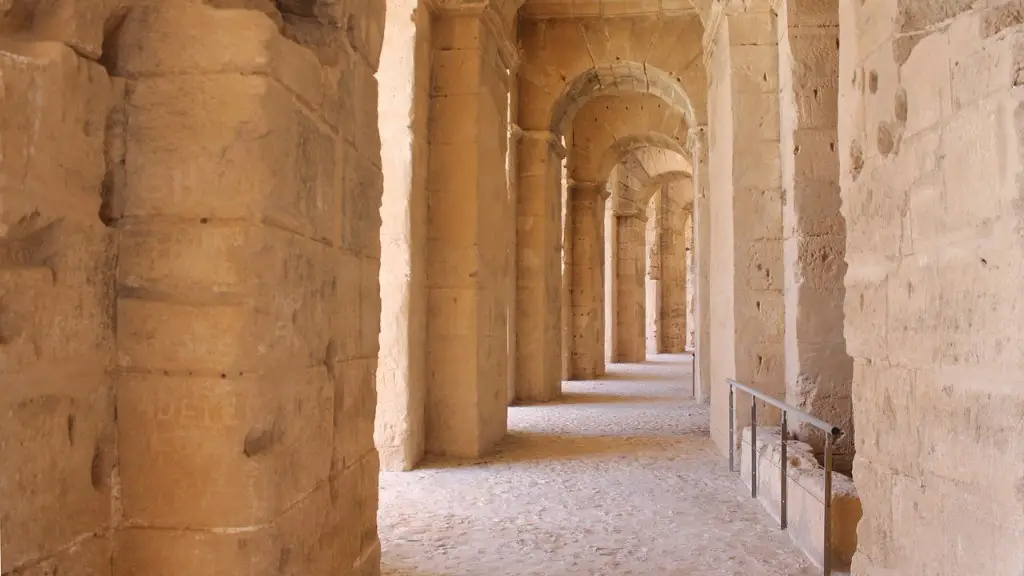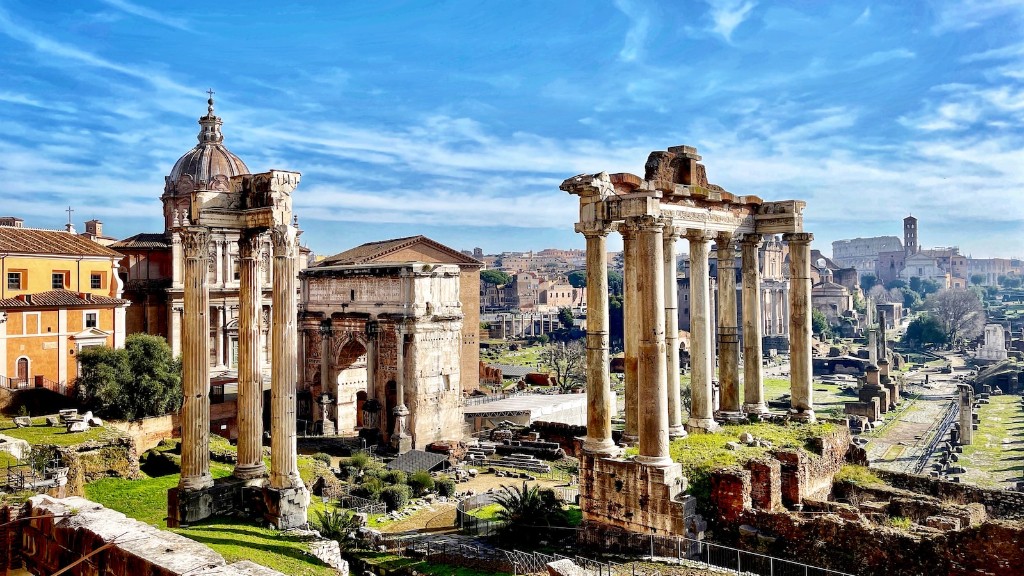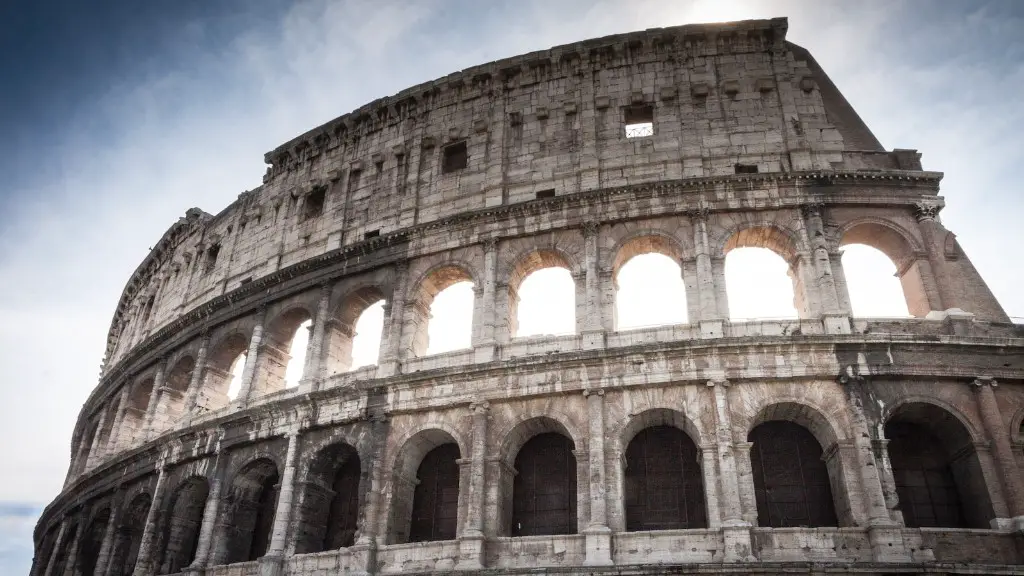The Pantheon of Ancient Rome
Ancient Rome was a complex religion that was heavily influenced by the various surrounding cultures of Greece, Egypt and the eastern Mediterranean. Many gods were worshipped in the pantheon and many of them still have an influence in society today. Rome had a diverse pantheon, with deities such as Jupiter, Mars and Venus, to name a few. Each god held power over different areas of life, from war to agriculture. Ancient Rome was polytheistic, meaning that they believed in many gods.
In addition to gods, Rome also had a cult of ancestor worship, which was of great importance. It was believed that the ancestors, as members of the family, could intercede with the gods on behalf of the living. This idea extended to include religious practices such as the building of altars, the offering of sacrifices, and the practice of Divination. Roman priests, the Flamens, played an important role in religious life, as they conducted the sacrifice rituals and presided over the religious festivals.
The most important aspect of Roman religion was the priesthood. Priests had a close relationship with the gods and were responsible for arranging sacrifices and interpreting the will of the gods. Augustan reforms saw religious practices centralised, with Rome’s status as the state religion emphasised. This was done in part to strengthen the state and promote Roman virtues, such as duty, honour and courage.
Romans also believed in superstitions such as portents and charms, which were believed to bring fortune or misfortune. Important days such as the Kalends of the first month, were marked as ceremonial days of fasting, offering, and sacrifice. The Vestal Virgins were an important part of the religious culture, as they were thought to protect the people of Rome from danger. They were all Roman women and were bound by a vow of chastity.
Ancient Rome was deeply religious, with temples everywhere and festivals held throughout the year. Religion was central to Roman life and it was believed that the gods would punish those who did not observe religious practices. This faith was transmitted to the Roman Empire, which spread throughout Europe and the Mediterranean region.
The Apotheosis of Ancient Rome
Rome experienced a religious transformation with Augustus, who ensured that the state religion of Rome was focused on the worship of the gods and goddesses of the Capitoline Triad. Augustus declared himself a ‘son of Zeus’ and was instrumental in a cult of worship of the Imperial family, which became known as the Imperial Cult. This was quite a radical development and started a trend of deifying and worshiping emperors and rulers, a practice that has continued in various forms until modern times.
Augustus also promoted the worship of legendary heroes, such as Hercules and Aeneas, who were seen as moral role models and examples of heroic Roman ideals. This was in contrast to the traditional religious practices, which were believed to bring fortune or misfortune. Augustus also initiated a number of religious reforms as part of his goal to restore the traditional Roman state religion.
Though it wouldn’t be until the third century AD that Christianity would become the official religion of Rome, it had already been growing in strength from the first century. It was persecuted in the early days, but faiths such as Christianity and Mithraism, popular with soldiers, proved to have staying power. Christianity began to spread in earnest from the fourth century and by the time of the fall of the Western Roman Empire, its grip was already established as it had been accepted as the official state religion in 379AD.
Though Christianity spread through the length and breadth of the Roman Empire, many of the traditional gods associated with the Romans still survive today. The figure of Mars, god of war and agriculture, is still used in some military symbolism, while Venus, goddess of beauty, love, and fertility, is still depicted in art and literature. In this way, the religion of Ancient Rome still lives on.
The Adjustments of Ancient Rome’s Religion
Religion in Ancient Rome underwent some subtle changes over the course of its existence. Most notably, religious practice more closely favoured the gods of the Capitoline Triad, with Jupiter being named ‘king of gods’ and Augustus claiming to be his son. The Imperial Cult was heavily promoted, with the emperors being worshipped as divine. With the spread of Christianity, other religions became less accepted and syncretic practices that mixed elements of several religions were frowned upon.
Political power was closely entwined with religion, while the populace was usually left to practice what they wished, provided they respected the official state cults. Some religions, such as Druidism and Mithraism, were popular but died out due to persecution. Despite the persecution, some cults and rituals survived, such as the cult of Fortune, the Vestal Virgins, and ancestor worship.
In 155AD, the Emperor Marcus Aurelius issued the Edict of Toleration, which was an attempt to move away from the polytheistic religion of Roman antiquity and towards monotheism by way of Christianity. This was a sign of the changing times, as more and more people began to practice the Christian faith. However, the changing religion saw traditional practices slowly forgotten and the vast pantheon of gods slowly passed into legend.
Analysis of Ancient Rome’s Religion
Ancient Rome was a complex religion that was heavily influenced by the various surrounding cultures of Greece, Egypt, and the east Mediterranean. It was heavily based on polytheistic beliefs, with a pantheon of gods presiding over different areas of life. These gods had temples, festivals, and priesthoods. Ancestor worship was another important part of their religious culture.
Augustus was instrumental in a cult of worship of the Imperial family, which became known as the Imperial Cult. This was quite a radical development and started a trend of deifying and worshiping of rulers. While Christianity slowly gained ground from the first century, many of the traditional gods associated with the Romans still survive today, such as Mars, Venus and Fortune.
Religion in Ancient Rome saw some modifications due to the encroaching influences of Christianity, though many religions, cults and rituals still survived, such as Druidism and Mithraism. Marcus Aurelius issued the Edict of Toleration, which was an attempt to move away from polytheism and towards monotheism by way of Christianity, though practices such as ancestor worship and superstitions still flourished.
Political Influence of Ancient Rome’s Religion
Political power and religion were closely entwined in Ancient Rome, with the emperors and legislature heavily influencing religious practices. Most notably, Augustus ensured that the state religion of Rome was focused on the worship of the gods and goddesses of the Capitoline Triad, while the Imperial Cult was promoted and emperors were worshipped as divine. Political power was a major factor in the spread of Christianity, with the Edict of Toleration issued by Marcus Aurelius.
Though religion in Ancient Rome was a complex mix of mythology, ancestor worship and superstition, it was also a major factor in political and social life. Religion was seen as a way to promote Roman values and unify the empire. The different gods and religious practices all helped to create an intertwined system of beliefs and rituals, with the gods being seen as resources to be used to ensure the well-being of their followers.
While Christianity eventually became the main religion of Rome, much of the foundation of Ancient Roman religion still exists in popular culture today. Though the Pantheon of gods may no longer be worshipped, their stories, symbols, and figures still remain in our culture.
Relevance to Modern Times
The influence of Ancient Rome’s religion can still be seen today, though its relevance may not be as overtly evident. Many of the stories and legends of the gods still hold sway over our imaginations, while the worship of emperors and rulers still exists in some form. It is interesting to note the gradual transition of polytheistic beliefs to monotheistic beliefs, with Christianity eventually becoming the official religion of the empire.
Religion in Ancient Rome was a major factor in political and social life, and its legacy still lives on today. Religion was used to unify the empire and to promote traditional Roman values, such as duty, honour, and courage. It was also seen as a way to ensure that the gods would bring fortune or misfortune upon its people. Though the influence of Ancient Rome’s religion may be subtle, it still holds an important place in our history.
Modern Comparisons
Modern society has seen a transition in many aspects that are comparable to the one in Ancient Rome. Where the Roman’s moved away from polytheistic beliefs towards monotheism, modern times have seen the move away from a reliance on religion to a more secular approach. The rise of the ‘self’ has been juxtaposed with the decline of religion and its teachings, though some of the moral lessons still remain influential.
Many of Ancient Rome’s gods still remain in modern culture, whether in the form of names for our days of the week, or in popular culture as characters in books and movies. In this way, the religious background of Ancient Rome is still relevant to our world today, whether we actively recognise it or not.
The political influence of religion is still a reality in modern times though in a different form. The notion of the ‘divine right of rule’ is still present in the idea of a monarchy and religion is sometimes used to further political agendas. In this way, though Ancient Rome may be in the distant past, its influence is still seen in modern life.
